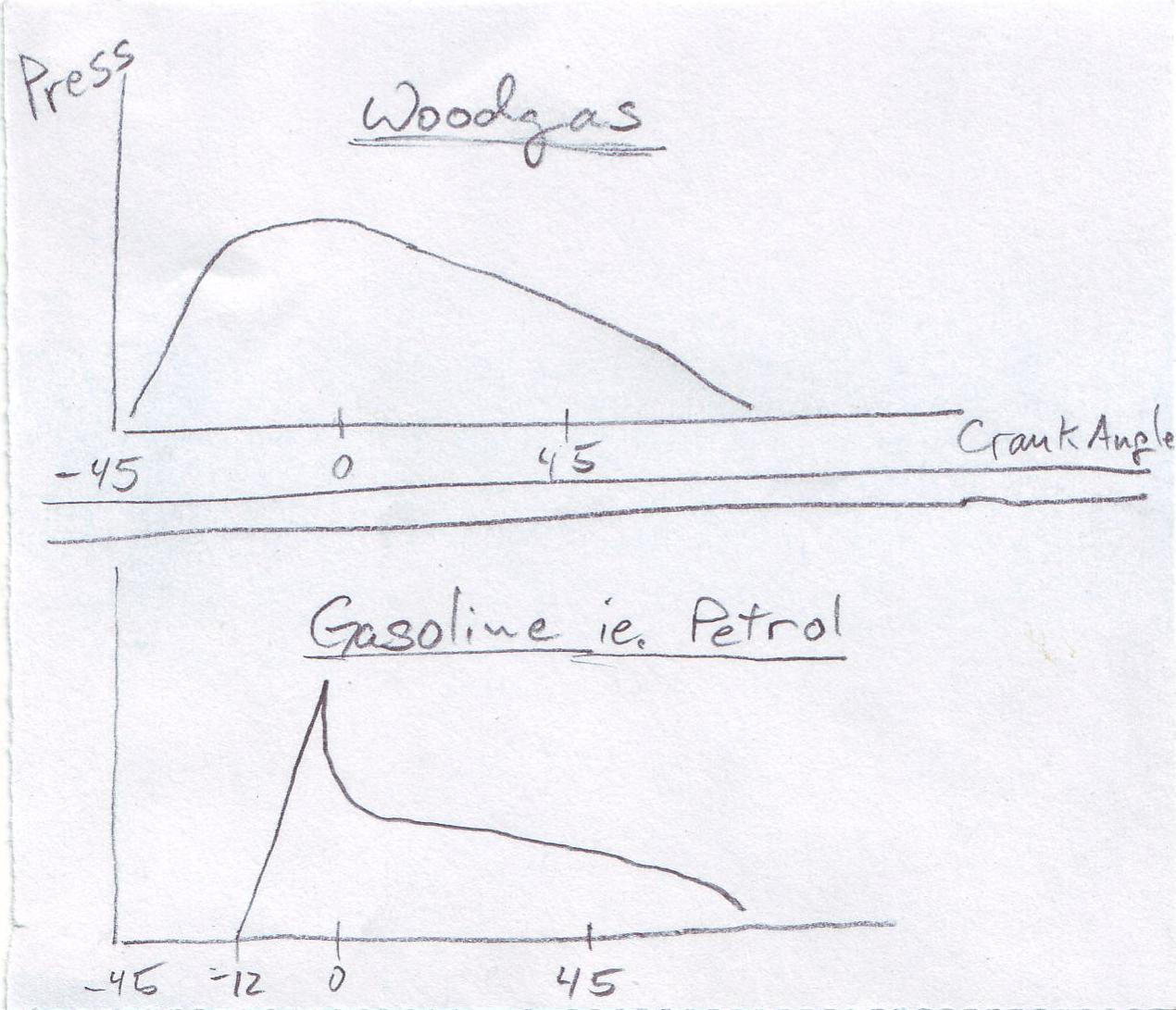Hi Preston,
Nice questions, easy answers to those would solve a lot but … there are not so easy answers to give to the layman…
Since you choose the GL1100 and getting rid of the original carburators ( at least i hope you do ) some basic info:
Your engine is sucking the air thru the intake pipes at a value always smaller then the actual displacement.
Ratio about 0,7 from the actual displacement.
The higher the rpm, the lower this number gets.
for benzine , the ideal mixture is about 14,7 Kg air to 1 kg benzine to be complete stoichiometric ( no fuel left to burn, no oxygen left )
This is a theoretical value but let us keep it for reference
an “ideal value” for char gas would be 1 to 1
now, creating suction on the gas side and restricting the air inlet to keep the gas mixture at the 1 to 1 level, will increase the drag for the suction , hence less volume (gas/air mix ) entering the combustion
= less power, the filling off your cylinders will drop to 0,4 - 0,5
The easier breathing and less filter for the gasifier side, the more gas and air will enter your engine = more power.
Because you have an excellent engine to play around with, my suggestions:
first engine part:
rebuild your engine and take away most restrictions as possible
use 1 larger butterfly valve type throttle and a simple t air/gasmixer
Make sure you have 1 coil per cylinder and not 1 coil sparking for 2 cylinders ( no waste spark system as the original honda )
Gasifier:
Start with a rigid build simple fire, nozzle size equals your intake port diameter
Nozzle from the side, no extra exhaust gasses for starters
The fuel:
This is the utmost important part…
Make sure you have engine grade, smokeless charcoal, well grinded and sieved in a correct sizing
Filters:
only build a filter to be used for short trips, use a secondary safety filter ( paper type ) if needed.
balance engine and gasifier at idlle speed, driving speed not more then 2500 rpm for starters
gasifiers don’t like to run on low and high suction, they like it easy and steady
recirculating exhaust gasses = recirculation N2 + Co2 in ratio 80 /20 ( theoretical value )
Better to induce some water or drops veggy oil to temper the core
Your gas will get richer and sometimes that is what the engine needs ( best on the little more rich side. )
You know when the gas is rich when you have to open the air mixture more… your gas is poor if you have to close the air more.
Once your engine runs stable on idlle, then gradual work your way up to the desired speed, carefully monitor your ashes and the filters for water/moister ( to low rpm = to cold core = air moister passes unconverted, to high rpm, the air passes the core unconverted but will burn with the gas downstream, warmer gasifier warmer gas output, moister )
No need for spark timing change, but can you send me a picture of your distributor side ? does it still have contacts or pickups with cdi ?

